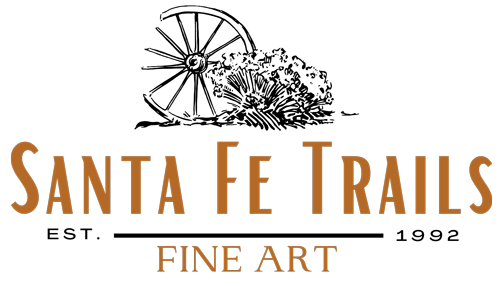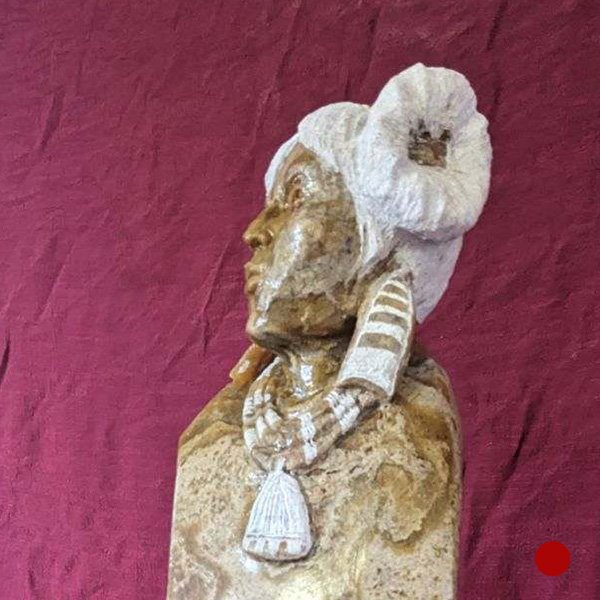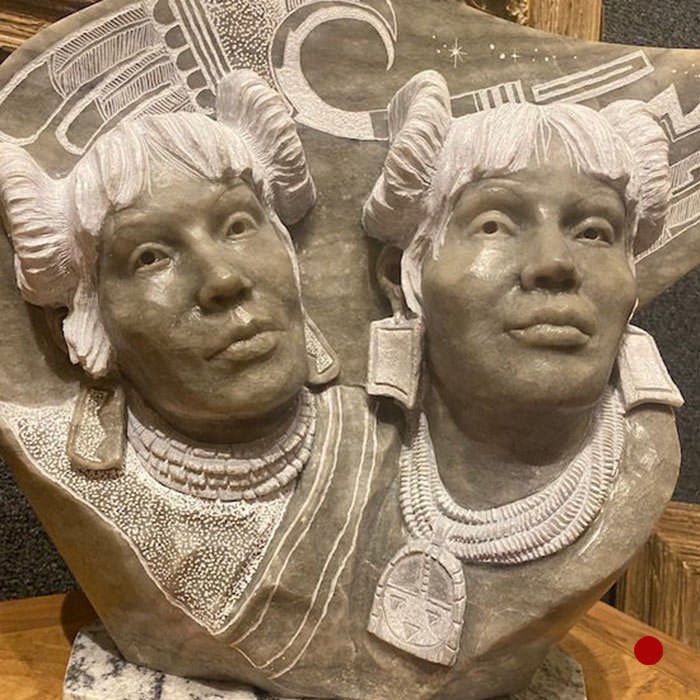Alvin Marshall, CAA
-
When Navajo sculptor Alvin Marshall holds a piece of Utah alabaster in his hands, he isn’t just touching a rock. He’s communing with his ancestors and working to turn the stone into spirit. “My people use stone in traditional ceremonies. Alabaster is closely associated with water and water ceremonies,” says Alvin, who lives near Farmington, New Mexico. “It’s beautiful, forgiving and it lends itself to me easily. It doesn’t fight or argue. Together, we make a spirit.” After a stint with the U.S. Army, Alvin studied sculpture with renowned Navajo artist Oreland Joe in the early 1980s. Though he received no formal training, Alvin rejects the idea of being self-taught. “Nobody is self-taught,” he says. “I learned from other artists, from teachers and from friends, and from my travels.” In fact, before Alvin traveled to Italy, he says he had a dream where Michelangelo told him to appreciate European art but seek out Alvin’s own niche. Partly because of that profound revelation, the models for Alvin’s figurative sculptures all live on the Navajo Reservation. “They could be my grandmother, my neighbor or my friend,” he says. “Each face is different, and like each face, each piece of stone is different. That has always been my goal. I strive to create unique, one-of-a-kind pieces.”
Artwork
*click on each image to see more info
About Alvin Marshall
When Navajo sculptor Alvin Marshall holds a piece of Utah alabaster in his hands, he isn’t just touching a rock. He’s communing with his ancestors and working to turn the stone into spirit. “My people use stone in traditional ceremonies. Alabaster is closely associated with water and water ceremonies,” says Alvin, who lives near Farmington, New Mexico. “It’s beautiful, forgiving and it lends itself to me easily. It doesn’t fight or argue. Together, we make a spirit.” After a stint with the U.S. Army, Alvin studied sculpture with renowned Navajo artist Oreland Joe in the early 1980s. Though he received no formal training, Alvin rejects the idea of being self-taught. “Nobody is self-taught,” he says. “I learned from other artists, from teachers and from friends, and from my travels.” In fact, before Alvin traveled to Italy, he says he had a dream where Michelangelo told him to appreciate European art but seek out Alvin’s own niche. Partly because of that profound revelation, the models for Alvin’s figurative sculptures all live on the Navajo Reservation. “They could be my grandmother, my neighbor or my friend,” he says. “Each face is different, and like each face, each piece of stone is different. That has always been my goal. I strive to create unique, one-of-a-kind pieces.”

















